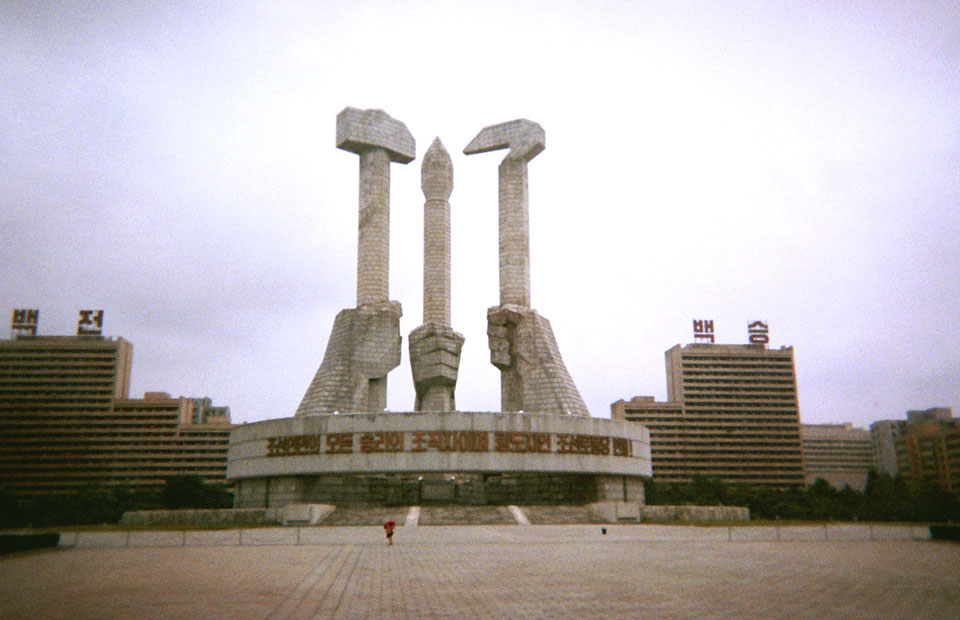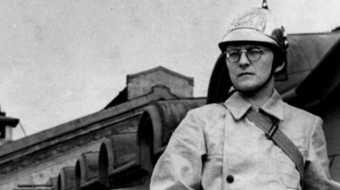
For those wanting to learn about modern Korean history, Stephen Gowans’s Patriots, Traitors and Empires: The Story of Korea’s Struggle for Freedom is highly recommended. This Canadian author has written a penetrating work about the country’s tumultuous history from the perspective of those who fought to liberate the country from foreign occupation.
In 1904, Japan invaded and occupied Korea. The Japanese ruthlessly exploited the local population they considered subhuman, going so far as banning the Korean language and imposing Japanese on the nation. In the early 1930s, a young charismatic Kim Il Sung and other Koreans, inspired by Marx and Lenin, formed a guerrilla movement to liberate the country from the Japanese.
As World War 2 came to a close in 1945, the Soviet and U.S. armies moved into the country to mop up remaining Japanese resistance. The Soviets occupied the North and the Americans the South. The Americans drew a line on the 38th parallel to separate both armies. Once the Japanese were rounded up, both powers would oversee the formation of a unified government and then withdraw their armies.
Upon liberation, people’s committees spontaneously emerged in villages and cities across the country that took over the functions of local government. At a congress in Seoul, delegates representing committees across the country set up the People’s Republic of Korea (PRK) and made plans to organize national elections. In the North, the Soviets accepted the local committees and the PRK and let them do their work while staying in the background.
In the South, the Americans disbanded the people’s committees, refused to recognize the PRK and set up a military government. Fearing that Korea would embrace socialism, the U.S. set out to build an anti-communist state in the South that would crush all leftist opposition. U.S. Army intelligence reported that Koreans were looking toward the Soviet Union as their model, not the U.S. The U.S. placed Korean collaborators with the Japanese occupiers back into administrative positions and set up a new Korean army and police force led by such collaborators who had fought with the Japanese occupation army.
U.S. occupation forces, working with the Korean military and police, killed and imprisoned tens of thousands. So intense was the repression that in 1948, “a strong and efficient” guerrilla army emerged in the rural areas that by 1949 controlled most villages. The U.S. installed Syngman Rhee as president in elections in the South that were boycotted by the local population who did not want to see the country divided.
In the North, the local committees formed an interim government headed by Kim Il Sung in 1946. The new socialist government introduced land reform, an 8-hour workday (down from 12-13 hours), nationalized Japanese factories and introduced social programs to combat poverty. Kim Il Sung’s popularity and support soared across the North and South. The Soviets kept their word and withdrew their army in 1948.
It was not long before sporadic fighting broke out on the 38th parallel between North and South Korean forces. Neither Kim or Rhee recognized the 38th parallel as a legally binding border and both vowed to reunify Korea into one state, according to Gowans.
Gowans demonstrates how the western view of the Korean war, that the Communist North attacked the freedom-loving South, is based on falsehoods. On June 25, 1950, the United Nations claimed that Northern forces crossed the 38th parallel and invaded South Korea. However, there were no independent observers on the ground to verify this claim, just U.S. and South Korean sources. The North claimed the South attacked first and they simply counterattacked and pushed into the South.
The South Korean army collapsed and was only rescued by U.S. military intervention. Once Northern forces were pushed out of the South, American forces invaded the North, suggesting that the U.S. also did not recognize the 38th parallel as a legally binding border. The war went on for three blood-soaked years, ending in a military stalemate.
Finally, the North signed an armistice with the South and the war came to a close, although no peace treaty was ever signed. The North Koreans suffered massive casualties, losing 10-15 percent of their population (out of 20 million) according to different estimates. The U.S. air force flattened every town and city with bombs and napalm.
After 1953, the North, known officially as the Democratic People’s Republic of Korea (DPRK), and the South, known as the Republic of Korea (ROK), pursued similar state-led economic development models that emphasized self-reliance. The DPRK built its socialist model based on publicly owned enterprises and worker-owned cooperatives, while ROK capitalism was based on large family-owned conglomerates. While the North received modest help from the socialist countries, South Korea, with a much larger population and with far more of its infrastructure still intact, received massive U.S. and Japanese financial injections and investments and preferential access to the U.S. consumer market. As a result, the Southern economy outgrew its Northern rival.
To isolate and smother the socialist economy in the North, the U.S. imposed sanctions on the DPRK that prevail to this day.
Neither the North nor the South ever gave up its goal of reunifying the country. The DPRK even promoted the idea of reunification that would allow both socialism and capitalism to coexist within one country.

In the ROK, authoritarian military juntas governed the country until the early 1980s, when a pro-democracy movement emerged and forced the generals from power. Despite the restoration of elections, the left continues to be repressed by the National Security law, imposed by the former Rhee government in 1948. Anyone who expresses support for the DPRK or socialism or advocates policies that are similar to the positions held by the DPRK can be jailed, and many have been.
To force the DPRK to spend more on military defense at the expense of the civilian economy, the U.S. organizes yearly military maneuvers, backed by B52 bombers, near the 38th parallel. The U.S. military also has nuclear weapons pointed at the North.
The U.S. made a publicity stir about the North’s development of nuclear weapons, claiming that it intends to attack the U.S. Gowans argues that the DPRK’s nuclear arsenal has allowed the country to reduce military spending, increase investment in the civilian economy and improve the standard of living. In 2016, the economy grew by 3.9 percent, more than South Korea or the U.S. “Nuclear weapons are the key to both the DPRK’s survival and to it overcoming the obstacles to its economic development that the U.S. has placed in its way,” he writes in contradiction to the Western mass media version.
The ROK also fits the definition of being a puppet state controlled by the U.S., according to Gowans. What independent state allows another country to control its armed forces, as the U.S. does with the Korean army? Previous South Korean presidents have asked the U.S. to hand over operational control of its army back to Korea, but the U.S. has refused to do so.
A refreshing, timely, well researched work, Patriots, Traitors and Empires does a fine job in providing a contemporary history of Korea, especially in demystifying North Korea, one of the most demonized, misunderstood countries in the world.
Patriots, Traitors and Empires: The Story of Korea’s Struggle for Freedom
By Stephen Gowans
Baraka Books, 2018, 270 pages










